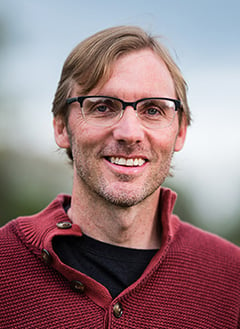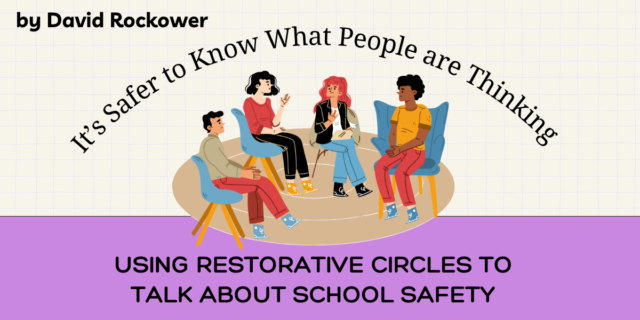
The following blog is by Chris Hass, author of Social Justice Talk: Strategies for Teaching Critical Awareness.
The following blog is by Chris Hass, author of Social Justice Talk: Strategies for Teaching Critical Awareness.
With the start of each new school year comes the important task of helping families understand what it means to root classroom learning in social justice. I generally assume social justice teaching is new to most families, especially in an elementary classroom. I expect some will immediately embrace this work while others will have a smattering of questions - if not strong reservations. For this reason, I like start the year by helping everyone wrap their minds around what this work is, what it will look like in our classroom, and how it will benefit not only their child but our entire community.
Typically, this in in the form of a letter. Below is what I sent home to families this year.
Hello Everyone,
Last week I wrote to you introducing myself and sharing some of the exciting things you and your child can expect from our second grade classroom this year – including many of the important inquiries we’ll engage in as readers, writers, mathematicians, scientists, and social scientists. I also detailed three important sources the kids and I will draw on when creating curriculum together. If you’ll recall, these include: our state standards, my professional knowledge of the kids’ individual and collective needs, and the things your children are interested in learning more about. In this letter I want to introduce one final source of curriculum that’s critical to our work– our community.
A former colleague of mine used to regularly tell his students, “The world is our classroom.” He would lead them out into the schoolyard to carefully observe and sketch the animals living there or take them on field studies to learn about the cultural and historic significance of different parts of the city. Other times he would invite them to share observations and concerns about things they noticed so their classmates could help them make sense of them. Indeed, the world is our classroom. And when we understand this we begin to see that an important part of our learning needs to be directed at making our community - our world - a better place for all.
So, how specifically does the community play such an important part in shaping curriculum? In our classroom this work falls within four goals I set for myself and for the kids: (1) celebrating every bit of who we are, (2) developing an understanding and appreciation for diversity, (3 identifying issues of injustice, and (4) learning to take action to improve our communities. To help you better understand each of these I will elaborate just a bit.
|
It’s important to note this community-based work isn’t something that’s added on to our curriculum. We don’t carve out a special time each day or get rid of any other studies to address community-related content. Rather, this work is integrated directly into what we’re already doing as learners.
For instance, if one of the kids shares a news article about funding issues in South Carolina schools I might build onto their discussion later in the year by introducing bar graphs that show disparities in school funding for different areas of our state as part of a larger inquiry into data and graphs (math). We could follow this up with visits from classroom guests who could help us better understand the geographic and economic differences between different parts of our state (social studies).
Or, as part of an inquiry into comprehension strategies I might deliberately select a text about segregation practices to elicit a particular line of questioning from the kids so we can simultaneously learn about reading more deeply and discuss what sorts of wrong minded beliefs make people feel justified in oppressing others based on their differences. If the kids are learning to question a text anyway, why not provide them opportunities to ask really important ones?
Of course, we’ll also create bar graphs showing our favorite decadent deserts and laugh hysterically at books about silly chickens scheming to outsmart clueless farmers. Second grade is full of so many amazing moments. Chief among these are the opportunities we’ll find together to not only address our personal needs but the needs of our communities at the exact same time. I can’t wait to see where this journey takes us. In the meantime, I would love to hear any questions, thoughts, or experiences you’d like to share in response to this work. As with all our learning, I want this community-based work to build on the important discussions and community efforts you all are already making at home. If you’d like to share these please feel free to call, text, or email.
Looking Forward to a Great Year,
Chris
you can learn more about Social Justice Talk: Strategies for Teaching Critical Awareness by Chris Hass and download a sample chapter at the link below.
 Chris Hass is a second and third grade teacher at the Center for Inquiry in Columbia, South Carolina. In his twenty years as an educator, he has taught in a variety of settings, served as an adjunct professor for early childhood and elementary programs, and presented at all levels on the importance of integrating social justice teaching into our everyday practices. Social Justice Talk is his first book.
Chris Hass is a second and third grade teacher at the Center for Inquiry in Columbia, South Carolina. In his twenty years as an educator, he has taught in a variety of settings, served as an adjunct professor for early childhood and elementary programs, and presented at all levels on the importance of integrating social justice teaching into our everyday practices. Social Justice Talk is his first book.
Related Reading

In Chapter 5 of Youth Scribes: Teaching a Love of Writing, R. Joseph Rodríguez discusses "Living Antiracism and Equity." In the following adapted excerpt, he describes a writing assignment where students can question and analyze moments of antiracism.

The following is an adapted excerpt from Rebecca Bellingham and Veronica Scott's The Artful to Exploring Identity and Fostering Belonging. See the book for the figure version of this post.
